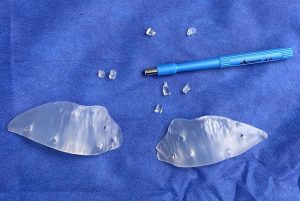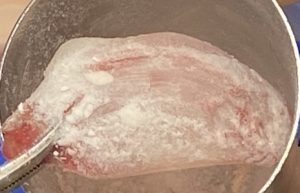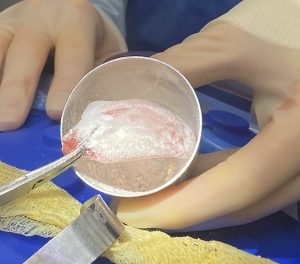While the incidence of infection in facial implants is fairly low, 1% to 2%, it is not zero. The definitive treatment for any facial implant infection is removal. This works 100% of the time for a successful resolution of the infection. But more times than not the patient will want an implant eventually replaced whether it was the original implant removed or a new custom implant made. The question then is how long to wait before placing a new implant and what will be done differently to lower the risk as much as possible of recurrent infection.
There is no standard time period to wait for re-implantation but longer is better than shorter. I prefer the minimum time of at least 3 months.


There is no magic method which will assuredly prevent all facial implant infections. But the importance of preventing bacterial adhesion to an implant’s surface isn the one intraoperative maneuver than surgeons can do. ( besides the typical IV antibiotics and washing the implant in an antibiotic solution. While some surgeons talk about washing or bathing an implant in an antibiotic solution this is not s effective as one would think given the hydrophobic nature of an implant’s surface. Changing the surface of the implant where an antibiotic can cling to (antibiotic well) is a potentially useful strategy.
Dr. Barry Eppley
World-Renowned Plastic Surgeon




